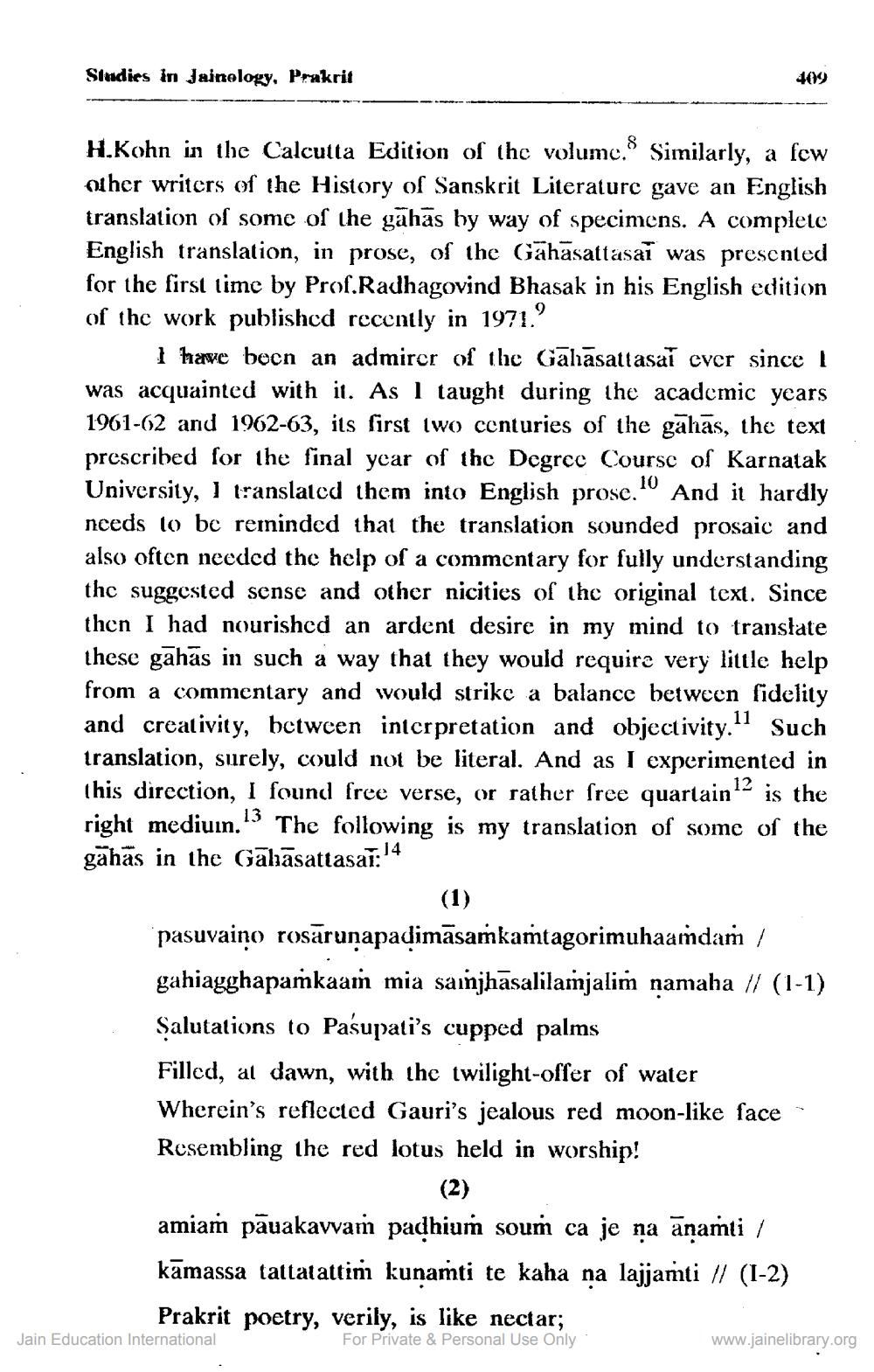________________
Studies in Jainology, Prakrit
H.Kohn in the Calcutta Edition of the volume. Similarly, a few other writers of the History of Sanskrit Literature gave an English translation of some of the gahās by way of specimens. A completo English translation, in prose, of the Gähäsattasai was presented for the first time by Prof.Radhagovind Bhasak in his English edition of the work published recently in 1971.'
I have bocn an admirer of the Galasatlasañ ever since I was acquainted with it. As I taught during the academic years 1961-62 and 1962-63, its first two centuries of the gahas, the text prescribed for the final year of the Degree Course of Karnatak University, 1 translated them into English prose. And it hardly needs to be reminded that the translation sounded prosaic and also often needed the help of a commentary for fully understanding the suggested sense and other nicities of the original text. Since then I had nourished an ardent desire in my mind to translate these gahās in such a way that they would require very little help from a commentary and would strike a balance between fidelity and creativity, between interpretation and objectivity.11 Such translation, surely, could not be literal. And as I experimented in This direction, I found free verse, or rather free quartain!? is the right mediuin.13 The following is my translation of some of the gähās in the Gabāsattasar:'
pasuvaino rosārunapadimāsamkamtagorimuhaamdam / gahiagghapaṁkaaṁ mia sainjhāsalilamjalim namaha // (1-1) Salutations to Pasupati's cupped palms Filled, al dawn, with the twilight-offer of water Wherein's reflected Gauri's jealous red moon-like face Resembling the red lotus held in worship!
(2) amiam pāuakavvam padhium soum ca je na anamti / kāmassa tattatattin kunamti te kaha na lajjamti // (1-2) Prakrit poetry, verily, is like nectar;
Jain Education International
For Private & Personal Use Only
www.jainelibrary.org




